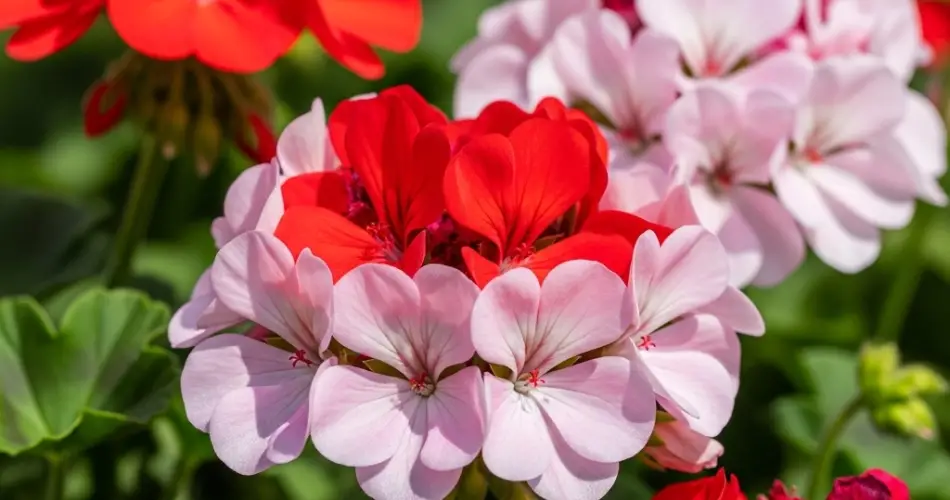Geraniums are beloved garden and container plants known for their colorful, long-lasting flowers and easy-going nature. To keep them blooming profusely and looking their best, regular pruning is essential. When done at the right time, pruning not only shapes the plant but also encourages the growth of more flower buds. Whether you grow zonal, ivy, or scented varieties, knowing when and how to prune geraniums can make a big difference in their performance. Here’s everything you need to know about the best time to prune geraniums for maximum blooms.
Why Pruning Matters
Pruning is more than just an aesthetic task—it’s vital for plant health and productivity. Regular pruning:
-
Promotes bushier growth
-
Prevents legginess
-
Removes dead or diseased material
-
Encourages more blooming stems
-
Improves air circulation around the plant
Geraniums are fast growers, especially during warm months, and without pruning, they can become scraggly and bloom less over time.
Best Times to Prune Geraniums
There are two main periods during the year when pruning geraniums is most beneficial: early spring and late summer or early fall.
1. Spring Pruning (Late Winter to Early Spring)
Purpose: Stimulates new growth and sets the stage for a vibrant blooming season.
As winter ends and temperatures begin to rise, geraniums come out of dormancy. This is the ideal time to give them a hard prune. For overwintered geraniums or those grown indoors, spring pruning helps remove old, leggy stems and encourages compact, bushy regrowth.
When to do it:
-
Late February to early April, depending on your climate.
-
After the last frost, if your plant has been overwintering outdoors.
-
When new green growth starts to appear on dormant plants.
How to do it:
-
Cut back each stem by one-third to one-half.
-
Use clean, sharp scissors or pruning shears.
-
Remove all dead, yellowing, or weak stems.
-
Trim above a leaf node to promote new branching.
Spring pruning refreshes the plant and helps it focus energy on producing new, vigorous growth and flower buds.
2. Fall Pruning (Late Summer to Early Fall)
Purpose: Prepares the plant for overwintering and removes spent growth.
After the summer blooming cycle, geraniums often look a bit tired. Pruning in late summer or early fall helps clean up the plant and encourages one final flush of blooms before dormancy. If you plan to bring your plants indoors for the winter, this is a good time to reduce their size and remove any diseased or insect-infested parts.
When to do it:
-
August to October, depending on local weather.
-
Before bringing plants indoors, especially in regions with early frost.
How to do it:
-
Remove dead flowers and yellowing leaves.
-
Cut back overly long or weak stems by about one-third.
-
Avoid heavy pruning in cold regions if plants will remain outside, as it may make them more vulnerable to frost.
Fall pruning helps maintain plant health through winter and makes spring care much easier.
Light Maintenance Throughout the Growing Season
While major pruning is best done in spring and fall, geraniums benefit from regular light maintenance during the blooming season.
Deadheading:
Remove spent flowers regularly to encourage continuous blooming. Pinch or snip off the flower stalk just above the first set of leaves.
Pinching back:
Pinching the tips of young stems encourages branching and fuller growth. Simply use your fingers to remove the top inch or so of new growth above a leaf node.
Trimming leggy stems:
If a stem becomes too long or bare, cut it back slightly to promote lateral growth.
These small tasks throughout the growing season keep your geraniums blooming longer and looking their best.
Tools and Tips for Successful Pruning
-
Always use clean, sharp scissors or pruning shears to avoid damaging the plant.
-
Disinfect your tools between plants to prevent disease spread.
-
Don’t prune when the plant is stressed from heat or drought—water first and wait a day.
-
Use pruned healthy stems to propagate new geraniums by rooting them in water or potting mix.
Final Thoughts
To get the most blooms from your geraniums, timing your pruning is key. Prune heavily in early spring to kickstart fresh growth, and tidy them up in late summer or fall to extend their flowering and prepare them for winter. Regular deadheading and light maintenance throughout the season will keep your plants lush, healthy, and bursting with colorful flowers. With just a little effort and attention to timing, your geraniums will reward you with continuous, vibrant blooms year after year.



